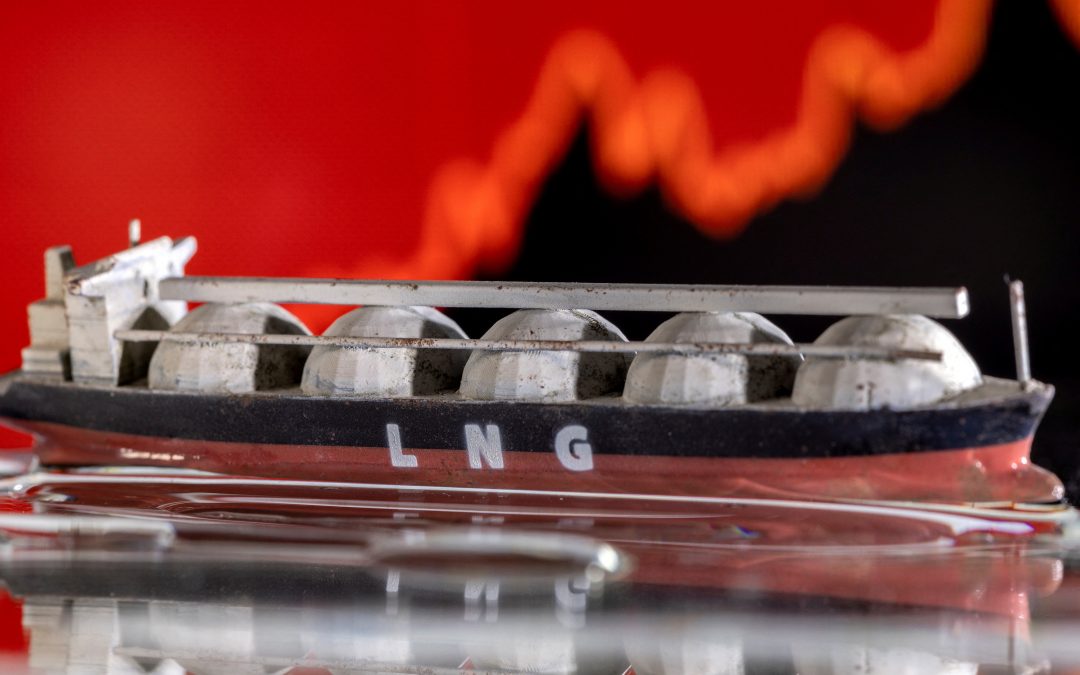The LNG shipping market is about to experience a great year earnings-wise, at least according to existing fundamentals projections. In its latest weekly report, shipbroker Intermodal said that “in a market where LNG spot prices follow a downward trajectory since late December, period charter rates for LNG vessels are also marginally retreating from their firm positions. Yet, owners still require firm figures amid a positive demand outlook, especially for 2H2023”.
According to Intermodal’s Research Analyst, Ms. Chara Georgousi, “in 2022, LNG imports have skyrocketed mainly driven by the war in Ukraine which prompted growth in wealthy European countries. In the meantime, extended covid restrictions in China were reflected in lower imports as the country largely shifted away from the spot market. According to Bloomberg, China’s 2022 imports marked a 19.4% y-o-y decline and averaged 64.44m tons. Instead, Europe’s imports skyrocketed to 124.93m tons over the same period, marking a spectacular 59% y-o-y surge”.
She added that “in 2023, the dynamics established in 2022 are to persist with Europe maintaining elevated LNG imports, while the reopening of China may boost demand. To begin with, the much-anticipated recovery of the Chinese economy will pivot global gas markets. China’s LNG demand is set to rise, especially from 2Q onwards. In numbers, demand growth in 2023 is forecast at 382 billion cbm, with the industrial sector leading the way. Still, Chinese spot demand will remain tight due to the start of new contract deliveries. In the meantime, European countries will continue to scramble to replace lost Russian pipeline volumes. Imports will remain elevated and will be pulled from farther away, thus increasing ton-miles for seaborne deliveries. Demand destruction will persist in 2023, however, the trajectory is uncertain. Seaborne imports are expected to peak towards the 3Q and ahead of the next winter when the bloc’s countries will need to refill their storage. In SE Asia, Thailand will lead the LNG demand growth amid declining domestic production and pipeline imports, while Singapore will witness increased demand for the power sector, as well as increased usage of LNG as bunkering fuel during 2023. Overall, global LNG demand could increase by 19m tons in 2023, according to Bloomberg”, Ms. Georgousi said.
“And while demand shows signs of recovery, limited supply growth will keep the supply/demand balance tight through 2023. Supply growth is projected to be a marginal 3.4% which will be driven by recoveries from plant outages rather than new capacity. In the US, gas production will remain strong, however, it will be constrained by limited LNG export capacity additions over the course of the year. Meanwhile, an additional 56m tons of project capacity approvals are expected within 2023 mainly on behalf of Qatar and the US. These two major producing countries are set to drive a gigantic global expansion program. Overall, supply growth will be limited until 2025, but between 2026-28 we foresee an average supply growth of 5.7%, based on post-final investment decisions. The key driver behind this projected growth is pressure from regulators and investors for cleaner LNG across the value chain which will buoy long-term demand”, Intermodal’s analyst said.
“Seaborne-wise, in terms of vessel supply, according to our preliminary data, in 2023, a total number of 144 new vessels will enter the LNG trade which is anticipated to match the new liquefaction capacity that will be added this year of more than 15m tons. Ton-mile growth is forecast more than 3.5%, underpinned by the resumption of exports from the Freeport LNG Terminal.
Moreover, the scheduled dry-docking of several older vessels within the year will limit vessel availability and thus, underpin freight rates. As for IMO’s CII regulation which came into force in Jan-23 and will be reinforced by 2026, this will act supportively as it will prompt vessels to slow steam and thus, increase ton days. Lastly, S&P activity seems to gain momentum, as in 2022 a total of 43 vessels exchanged hands, according to our database, while in 2021 only 8 vessels have been reportedly sold. As the short-term and spot market continues to develop, more independent owners will be prompted to enter the trade in 2023, and we could expect to see more second-hand sales being reported throughout the year”, she concluded.
Source: Hellenic Shipping News






